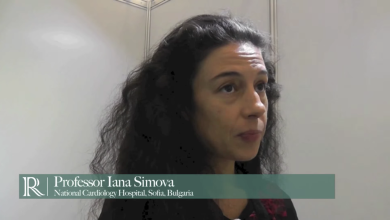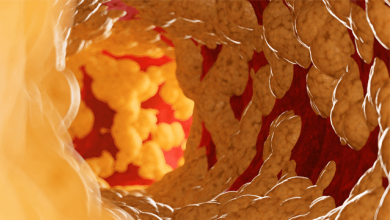Search results
PROMOTED
Author(s):
Nicolas M Van Mieghem
,
Kendra J Grubb
,
David Hildick-Smith
,
et al
Start date:
Mar 26, 2024
Author(s):
Mario Petretta
,
Pierluigi Costanzo
,
Alberto Cuocolo
Added:
3 years ago
Myocardial blood flow (MBF) must respond to changes in metabolic conditions and oxygen requests to meet the needs of myocytes, and autoregulation plays a mayor role in the control of coronary circulation.1–3 It has been demonstrated that, as a coronary artery is progressively narrowed, resting flow does not change at first, but maximal flow (achieved by injecting a vasodilator) decreases…
View more
Author(s):
Iana Simova
Added:
8 years ago
Professor Iana Simova discusses the advantages and limitations of non-invasive measurement of coronary flow reserve, at the 2015 ESC congress in London.
View more
Author(s):
Elsayed Abd-El-kader Elsayed
Added:
12 months ago
Author(s):
Colin Berry
Added:
3 years ago
Introduction
Information on coronary physiology is increasingly important to inform treatment decisions in the cardiac catheter laboratory. The purpose of this article is to review the rationale and indications for fractional flow reserve (FFR), coronary flow reserve (CFR) and the index of microvascular resistance (IMR) in interventional cardiology practice. A second objective is to highlight…
View more
Author(s):
Iana Simova
Added:
3 years ago
Coronary flow velocity reserve (CFVR) represents the ratio between maximal (stimulated) coronary blood flow, induced by using a coronary vasodilator, and baseline (resting) blood flow (see Figure 1). As a ratio it is a dimensionless variable. It could be measured with different tools – some of them, such as intracoronary Doppler flow wire and coronary sinus thermodilution, are invasive methods…
View more
Author(s):
Valérie E Stegehuis
,
Gilbert WM Wijntjens
,
Tadashi Murai
,
et al
Added:
3 years ago
The emphasis in ischaemic heart disease (IHD) diagnosis has historically been directed towards the identification of epicardial coronary stenosis by selective coronary angiography, and its management by percutaneous coronary intervention (PCI) or coronary bypass graft surgery. Over the past two decades, the application of coronary physiology techniques to identify the haemodynamic severity of…
View more
Author(s):
Samer Fawaz
,
Sarosh Khan
,
Rupert Simpson
,
et al
Added:
1 year ago















